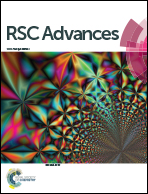Influence of lipase under ultrasonic microwave assisted extraction on changes of triacylglycerol distribution and melting profiles during lipolysis of milk fat
Abstract
In this study, the use of low irradiation ultrasonic microwave assisted extraction (UMAE) on lipases mixed with anhydrous milk fat (AMF) or anhydrous buffalo milk fat (ABF), with the aim of hydrolyzing triacylglycerols (TAGs), especially those containing short chain fatty acids, is reported. Lipozyme-435, Novozyme-435 and Thermomyces lanuginosus were mixed with phosphate buffer and either AMF or ABF in a jacketed flask. The reaction mixtures were exposed to low irradiation UMAE under temperature control (50 °C ± 2 °C) for 45 minutes. An ultra-performance liquid chromatography (UPLC) system coupled with quadrupole time-of-flight mass spectrometry (Qu-ToF-MS) was used to analyze TAG in AMF and ABF after lipolysis. The re-distribution was evidenced by the presence of a higher percentage of TAGs with at least two medium-chain fatty acids and one long-chain fatty acid, and a high percentage of TAGs with long-chain fatty acids as a consequence of a decreased percentage of TAGs with short-chain fatty acids. Furthermore, the melting and crystallization profiles were modified in both AMF and ABF treated with lipases in comparison to just AMF or ABF.


 Please wait while we load your content...
Please wait while we load your content...